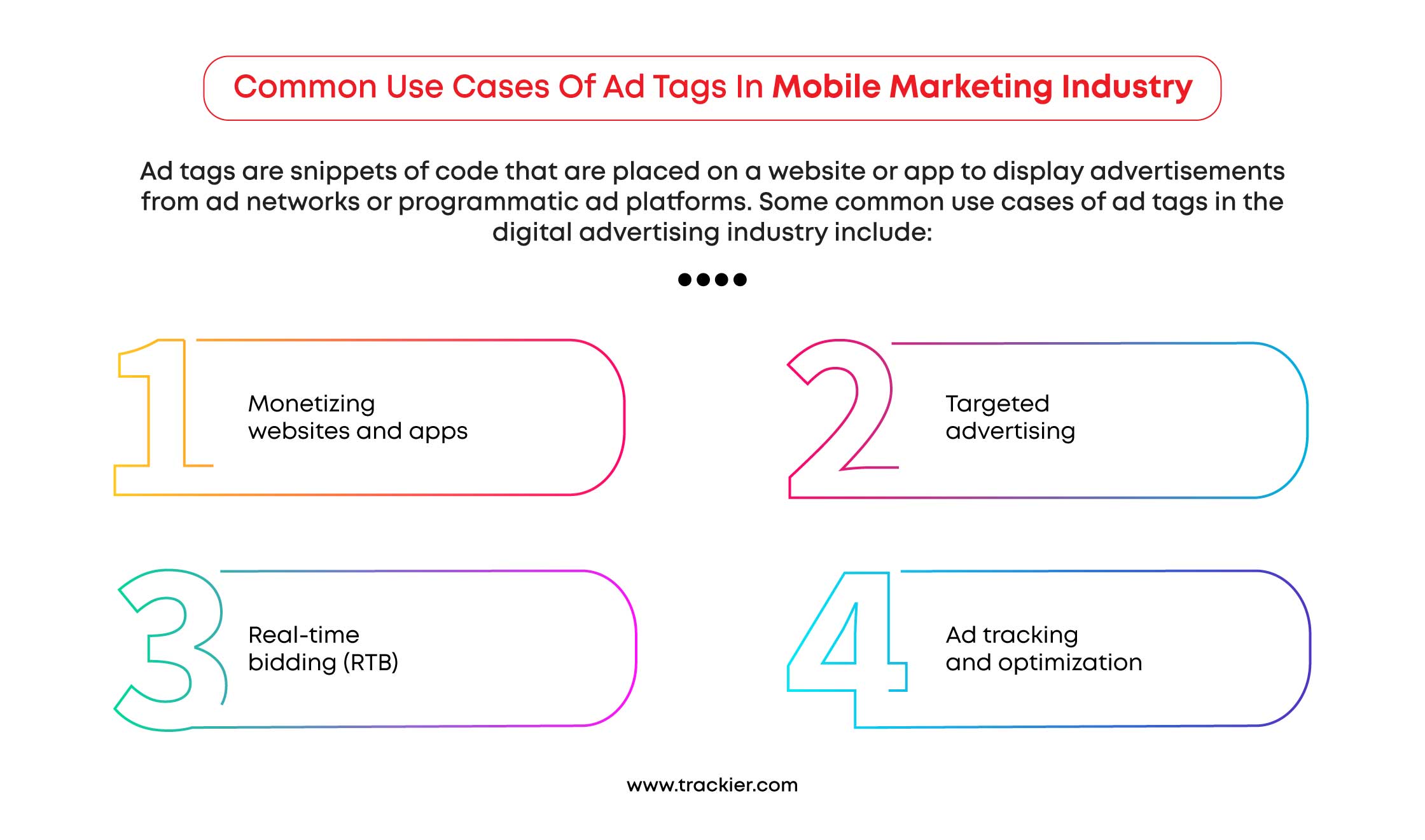An ad tag (aka innovative tag or placement tag) is a piece of code inserted in the website that sends a request to the ad server to expose an advert in a given area. It can be both an HTML or Javascript code snippet blended with a URL from which the browser will request an ad to display.
Each ad tag tells about the nature of the advertisement, how it will look like on the specific websites — it includes statistics of the innovative advert format, size, category, and different requirements. The snippet also can be put into the header or iFrame wrapper to separate it from the website script.
The Role of an Ad Tag in Mobile Marketing Industry
An ad tag in digital marketing or mobile marketing helps to activate the browser to push them forward, and sometimes, gather statistics about customers that see the specific advert. In short, an advert tag makes digital marketing and marketing feasible as we are aware of it today.
Some Common Types of Ad Tags:
- JavaScript Ad Tags: JavaScript ad tags are the most commonly used ad tags. They are easy to implement and allow for dynamic ad serving, which means that different ads can be displayed to different users based on their behavior or other criteria.
- HTML Ad Tags: HTML ad tags are simple and easy to implement. They are commonly used for static ads, such as banner ads or text ads.
- Iframe Ad Tags: An iframe ad tag allows the ad to be displayed within an iframe on the website. This is useful for ads that require a different size or shape than the website’s layout.
- VAST Ad Tags: VAST (Video Ad Serving Template) ad tags are used for video ads. They allow for the ad to be served in different formats and sizes depending on the user’s device and connection speed.
- Native Ad Tags: Native ad tags are designed to look like part of the website’s content. They are often used for sponsored content or sponsored posts.
- Dynamic Ad Tags: Dynamic ad tags allow for ads to be changed in real time based on the user’s behavior or other criteria. This allows for more targeted and effective advertising.
- Rich Media Ad Tags: Rich media ad tags allow for ads that are more interactive and engaging, such as expandable ads or ads that include videos or animations.
A normal life cycle of an ad placement tag includes:
- A writer generates an advert tag through an advert server and locates it at the webpage. The advert tag triggers the browser to send the ad tag to the writer`s advert server.
- The writer’s advert server forwards the digital tag to the statistics control platform to complement it with consumer statistics for behavioral concentration. This step is optional, seeing that now no longer all and sundry makes use of a DMP.
- The placement tag is dispatched further — to the advertiser’s advert server. It gets the advert tag and ships an applicable advert innovative to the writer’s advert server. The latter ultimately places the advert inside the proper stock slot.
Also you may have noticed, all digital marketing and marketing gamers use innovative ad tags whilst pursuing unique goals.











